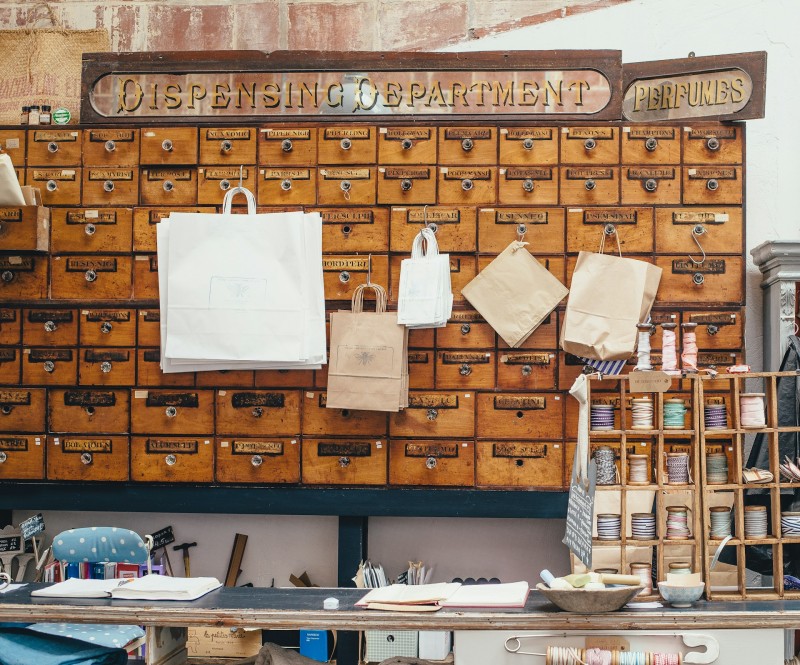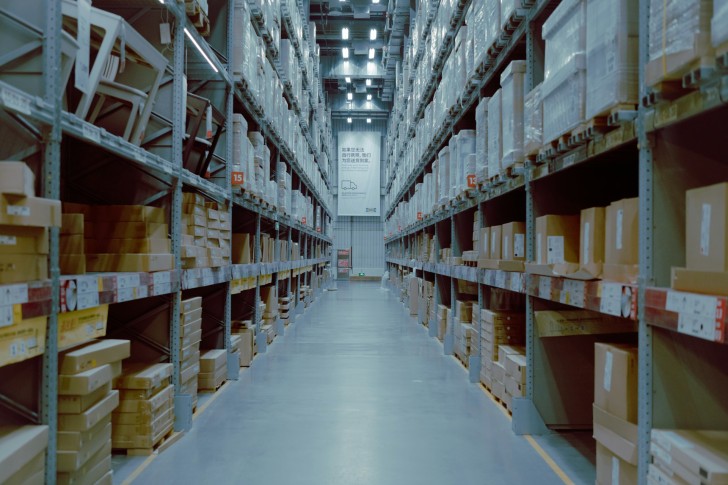- Why protecting inventory and equipment matters
- Choosing the right storage facilities
- Organizing your space efficiently
- Protecting against theft and unauthorized access
- Maintaining proper environmental conditions
- Investing in routine maintenance
- Training your employees on proper care
- Planning for emergencies
- The bottom line on protecting inventory and equipment
As such, finding the best ways to keep your items secure and in good condition is crucial for your success. Understanding how to safeguard these resources doesn’t just prevent losses–it also contributes to a more stable and productive business.
So in this post, we’ll take a look at some of the realities of protecting your inventory and equipment regardless of how large your business is.
Why protecting inventory and equipment matters
Inventory and equipment are the backbone of many businesses, serving as the tools and products that keep operations running smoothly. If these assets are lost or damaged, the impact can ripple across your entire business. Replacing valuable items can take time and money, while disruptions might cause delays that upset customers or affect revenue.
For instance, a company that relies on heavy machinery cannot afford unexpected breakdowns caused by poor storage or improper care. Similarly, a retail business that experiences theft or spoilage may face challenges in meeting customer demands. These problems can easily grow into larger issues if steps aren’t taken to protect what matters most.
Investing in protection for your inventory and equipment helps your business avoid unnecessary risks and stay prepared for unexpected situations. It also helps create an environment where employees can work more efficiently, knowing the tools and resources they need are well-maintained and secure.
Choosing the right storage facilities
One of the first steps to protecting inventory and equipment is selecting proper storage facilities that meet your specific needs. Not all spaces are created equal, and using the wrong type of facility can lead to damage or inefficiency. You’ll want to think about factors like temperature control, space requirements, and how easy it is to access items when you need them.
For example, if you’re storing perishable goods or sensitive equipment, a temperature-controlled facility can prevent spoilage or malfunctions. On the other hand, larger items like machinery or vehicles might need open, spacious areas that allow for movement and maintenance. Choosing the right storage ensures your items stay in good condition and are ready to use when needed.
Consider modern options like commercial metal buildings, which are known for their durability and versatility. These structures can be customized for different uses, providing reliable protection from weather, theft, and other potential risks. They’re also easy to maintain and can save your business money in the long run.
Organizing your space efficiently
A well-organized storage space makes a huge difference in keeping inventory and equipment safe. When everything is stored properly and labeled clearly, it becomes easier to locate items quickly, which reduces the risk of accidental damage or misplacement.
Shelving systems, labeled bins, and dedicated zones for different types of items can help keep things in order. For instance, storing small tools in labeled containers can prevent them from getting lost, while placing heavier equipment on lower shelves can reduce the chances of accidents. These simple strategies make a big impact on maintaining a tidy and secure space.
It’s also important to regularly inspect your storage setup to make sure it still meets your needs. As your inventory grows or your equipment changes, you might need to rearrange or expand your space to keep everything accessible and secure.

Protecting against theft and unauthorized access
Theft is one of the biggest threats to inventory and equipment, but it’s also preventable with the right security measures and proactive planning. Installing sturdy locks, advanced alarms, and strategically placed cameras can effectively deter thieves while helping you monitor and keep track of what’s happening on your property at all times.
For example, surveillance cameras placed at key entry points can monitor activity and capture footage if something goes wrong. Motion-sensor lights and alarms add an extra layer of protection by alerting you to potential intrusions. A strong fence or gate around your facility can also limit access to authorized personnel.
You might also consider using technology like inventory tracking systems, which allow you to monitor your items digitally. With these tools, you can quickly spot discrepancies and take action if something goes missing.
Maintaining proper environmental conditions
Environmental factors like temperature, humidity, and exposure to sunlight can greatly impact the condition of your inventory and equipment. Some items, such as electronics or perishable goods, require specific conditions to remain functional or usable over time.
Investing in climate-controlled storage can prevent issues like rust, mold, or spoilage. For instance, storing electronic equipment in a dry, cool environment reduces the risk of overheating or damage from moisture. Similarly, agricultural products stored in temperature-controlled areas stay fresh longer, helping you avoid unnecessary losses.
You should also check the condition of your storage space regularly to catch any problems early. Look for signs of leaks, pests, or other issues that might threaten the safety of your items. Small preventative steps like these can save you from bigger headaches down the line.
Investing in routine maintenance
Keeping your equipment in good working order is just as important as storing it properly. Routine maintenance, such as cleaning, oiling, or inspecting parts, extends the life of your tools and machinery and prevents costly breakdowns.
For example, a warehouse forklift might need regular checks to ensure it’s operating safely and efficiently. Neglecting this maintenance could lead to unexpected failures that disrupt operations and require expensive repairs. Regular upkeep keeps everything running smoothly and minimizes downtime.
Make a habit of scheduling maintenance checks and keeping records of when each piece of equipment was last inspected. This system helps you stay on top of small issues before they turn into larger problems, ensuring your tools are always ready to perform.

Training your employees on proper care
Your employees play a huge role in protecting your inventory and equipment because they interact with these assets daily. Providing them with proper training ensures they know how to handle items safely, use equipment correctly, and recognize potential issues before they become bigger problems. Well-trained employees can make a significant difference in maintaining the condition of your resources and preventing unnecessary losses.
For instance, teaching warehouse staff how to load and unload pallets correctly can reduce the risk of goods being damaged during handling. Similarly, offering detailed training on machinery operation helps prevent accidents, extends the life of equipment, and minimizes costly downtime. When employees are equipped with the right knowledge, they’re less likely to make mistakes that could lead to financial setbacks or operational delays.
It’s also important to develop and communicate clear guidelines and procedures for handling inventory and equipment. Providing written protocols, step-by-step instructions, and visual aids can reinforce training and make expectations clear. Regularly reviewing these guidelines with employees helps ensure everyone is on the same page and reduces the likelihood of errors. Encouraging open communication also allows workers to report issues or suggest improvements, fostering a culture of care and responsibility within your business.
Planning for emergencies
Emergencies like fires, floods, or power outages can happen when you least expect them, and they can have devastating effects on your inventory and equipment. Preparing for these situations in advance helps reduce the damage and recover more quickly.
You can start by identifying the risks your business might face based on its location or industry. For example, businesses in areas prone to flooding should take precautions like elevating storage racks or using waterproof containers. Fire safety measures, such as installing sprinklers or keeping fire extinguishers on hand, are also crucial.
Creating an emergency plan that includes evacuation procedures, backup storage options, and a list of contacts for repairs or assistance helps you stay ready for unexpected events. Regularly reviewing and updating this plan keeps your business prepared for the future.
The bottom line on protecting inventory and equipment
Protecting inventory and equipment requires thoughtful planning, the right tools, and ongoing effort. By choosing appropriate storage, organizing your space, and investing in security measures, you can safeguard your business assets from potential threats. Regular maintenance, employee training, and emergency planning further enhance your ability to keep these valuable resources safe.
By taking these steps, you’re not just protecting your items–you’re also building a more stable and productive business that’s prepared to handle challenges and grow over time. When your inventory and equipment are secure, you can focus on what truly matters: running and expanding your business.
At the end of the day, a well-protected inventory and properly maintained equipment also contribute to building trust with customers and partners. When your business consistently delivers quality products and services without delays or disruptions, it strengthens your reputation and reliability in the marketplace. This trust can lead to repeat business, referrals, and stronger relationships that support long-term success.
 Editorial staff
Editorial staff

 Editorial staff
Editorial staff

